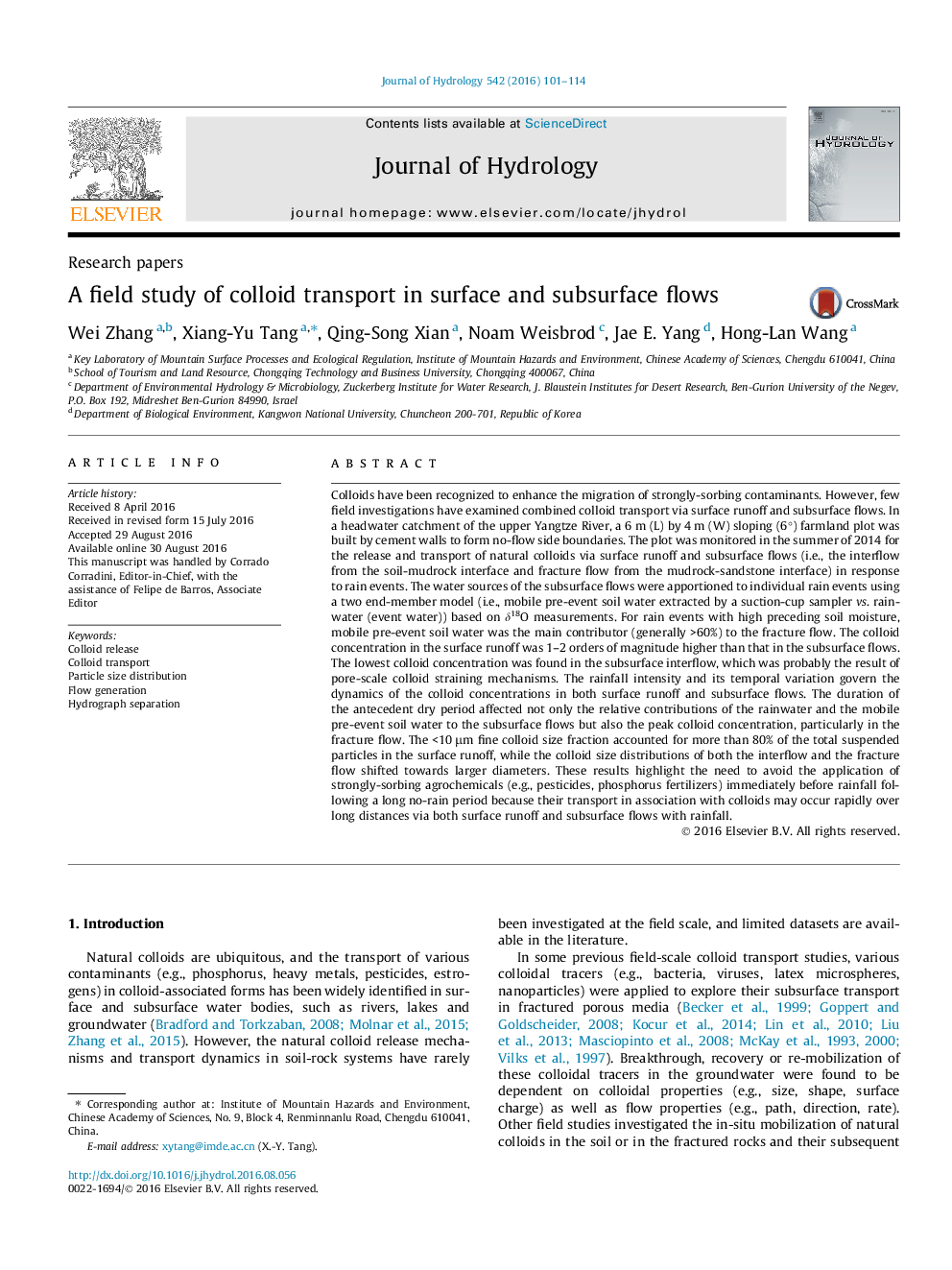| کد مقاله | کد نشریه | سال انتشار | مقاله انگلیسی | نسخه تمام متن |
|---|---|---|---|---|
| 6409225 | 1629911 | 2016 | 14 صفحه PDF | دانلود رایگان |

- Subsurface flow was apportioned into rainwater and mobile pre-event soil water.
- The duration of no-rain period affects peak colloid concentration.
- Rainfall intensity and its temporal variation govern colloid discharge dynamics.
Colloids have been recognized to enhance the migration of strongly-sorbing contaminants. However, few field investigations have examined combined colloid transport via surface runoff and subsurface flows. In a headwater catchment of the upper Yangtze River, a 6 m (L) by 4 m (W) sloping (6°) farmland plot was built by cement walls to form no-flow side boundaries. The plot was monitored in the summer of 2014 for the release and transport of natural colloids via surface runoff and subsurface flows (i.e., the interflow from the soil-mudrock interface and fracture flow from the mudrock-sandstone interface) in response to rain events. The water sources of the subsurface flows were apportioned to individual rain events using a two end-member model (i.e., mobile pre-event soil water extracted by a suction-cup sampler vs. rainwater (event water)) based on δ18O measurements. For rain events with high preceding soil moisture, mobile pre-event soil water was the main contributor (generally >60%) to the fracture flow. The colloid concentration in the surface runoff was 1-2 orders of magnitude higher than that in the subsurface flows. The lowest colloid concentration was found in the subsurface interflow, which was probably the result of pore-scale colloid straining mechanisms. The rainfall intensity and its temporal variation govern the dynamics of the colloid concentrations in both surface runoff and subsurface flows. The duration of the antecedent dry period affected not only the relative contributions of the rainwater and the mobile pre-event soil water to the subsurface flows but also the peak colloid concentration, particularly in the fracture flow. The <10 μm fine colloid size fraction accounted for more than 80% of the total suspended particles in the surface runoff, while the colloid size distributions of both the interflow and the fracture flow shifted towards larger diameters. These results highlight the need to avoid the application of strongly-sorbing agrochemicals (e.g., pesticides, phosphorus fertilizers) immediately before rainfall following a long no-rain period because their transport in association with colloids may occur rapidly over long distances via both surface runoff and subsurface flows with rainfall.
Journal: Journal of Hydrology - Volume 542, November 2016, Pages 101-114